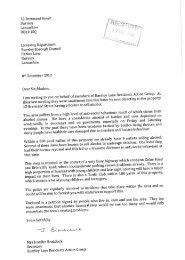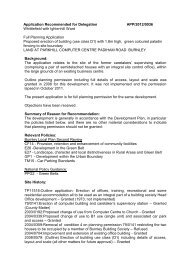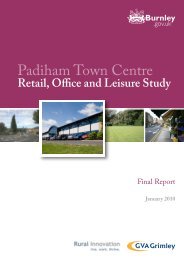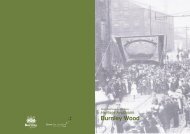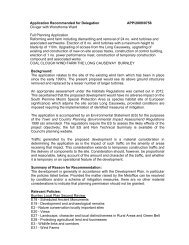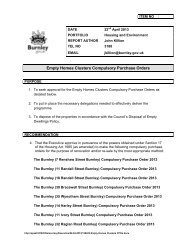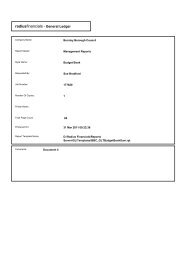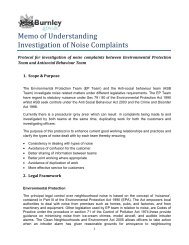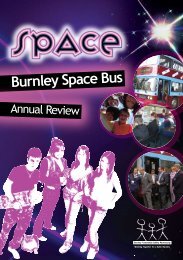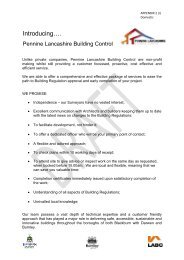The Padiham Heritage Appraisal - Burnley Borough Council
The Padiham Heritage Appraisal - Burnley Borough Council
The Padiham Heritage Appraisal - Burnley Borough Council
- No tags were found...
Create successful ePaper yourself
Turn your PDF publications into a flip-book with our unique Google optimized e-Paper software.
1870s: Railway Road8.4.3 Building records show that the stretch of Station Road running south towards therailway line was known originally as Kay Street, after Kay’s Bobbin Works just south of thecharacter area (see Area 5) before changing its name to Railway Road around the mid 1870s.8.4.4 Utilising land leased from Major Starkie, residential development commenced at thesouthern end of Railway Road (both sides) in 1875 and continued through the 1870s. Projectswere typically short runs of terraces (up to eight properties) including a combination of housesand shop units. With the addition of five properties at its northern end (junction of Park Road),Railway Road (minus the later public buildings) was in place by 1890 (Plan C). Among itsresidents according to the 1891 census was Thomas Blezard who established Green BankFoundry or Station Works nearby (see paragraph 8.3.3). Another was William Kay who by 1888had succeeded his father as manager of Kay’s bobbin works.8.4.5 At its height with its mix of shops, other businesses, dwellings and public buildings,Railway Road would have been a bustling secondary high street on the approach to thestation. Today a significant group of buildings reflecting this mix remains on the eastern side ofthe road, though some appear to be in poor visual condition. <strong>The</strong> different ages and functionsof the buildings means that the row departs from the consistent building lines and heightsmaintained in the wider housing area. (See photo below).Station Road (1877) 70-66 are two houses plusshop and house built by Richard Wade in 1877.Virgil Anderton was the architect. Pilasters onthe houses balance those on the shopfront. (BCR54960) <strong>The</strong> art shop at 64 and the house at 62pre-date Wade’s property, having being built in1875 by J & D Howarth. (BCR 54961) <strong>The</strong> latter aredistinguished by the finer stonework and detailingaround windowsOriginal plans of 40-44 Station Road. <strong>The</strong>se threehouses above shops of unusual design were builtby Admiral Moorhouse, a photographer, in 1877(BCR 54959).Former shops: 40 Station Road (centre) and 42(left) are much altered since they were built. Bycontrast features of the design of the former shop at38 (right) have survived.<strong>The</strong> Railway Hotel8.4.6 <strong>The</strong> Railway Inn, as it was originally known, was built forthe benefit of travellers at the same time as the station (Westall1993). Building records for adjacent properties on Railway Road(62-64) dating from 1875 show the Railway Inn to have alreadybeen in existence at that time (BCR 54961), but it was not listedin Barrett’s directory of 1872. Later plans (undated) by G D LFernandies for a coach house and stables were later approved andlocated adjacent to Green Brook/River Calder at the rear of theproperty (BCR 54951). <strong>The</strong> OS Plan of 1890 (Plan C) shows a linkacross to the river to the rear of the Inn from the rear of Bridge EndMill on <strong>Burnley</strong> Road via stepping stones and a footbridge.<strong>The</strong> Railway Hotel, Station Road90 heritage appraisal



